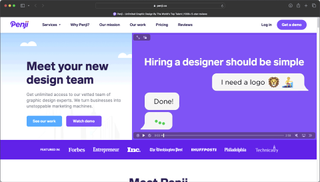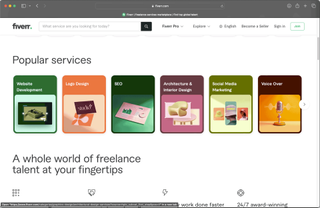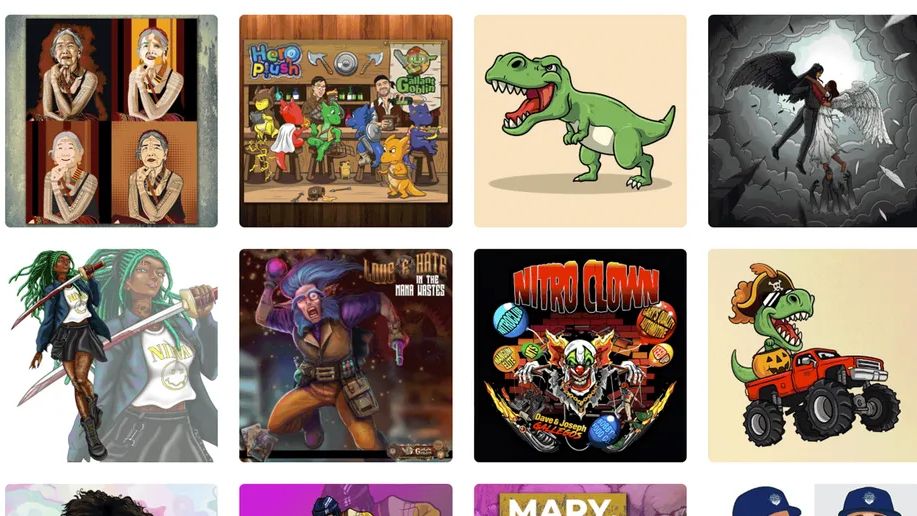Expanding the potential talent pool for your company or idea was one of the great failed promises of the internet era. Sure, some co-working and gig economy services do what they say on the tin, but as many of us have discovered, being able to cast your net wide for professional services means you’ll attract everyone – not just the pros you’re hoping for but armies of dodgy hobbyists and content sweatshops.
The low barrier of entry of online job sourcing platforms can impose an ironically high barrier to seamless operation because of differences in language and business culture. To put it bluntly, the results can be crap.
Providers like Guru, Mechanic Turk or Task Rabbit are fine for more straightforward and mundane business processes (although the rise of Gen AI is threatening their markets), but design projects that call for understanding, experience and creativity remain mostly out of the reach of the democratised online gig economy.
What the internet needs is a provider that connects users seeking design services with ‘real’ designers – people who understand how a brief is communicated, ideated and executed, and a service called Penji might be it.

The new creative economy
Penji offers design services for flat rate subscriptions in one of three price tiers depending on your needs.
It connects your brief to the best designer for the job using AI, and if the reviews are to be believed, they’re as communicative and collaborative as if you had one in house.
Maybe you only need basic services like branding design or advertising layouts, maybe you need all that as well as pro illustrations, web design or motion graphics. Your subscription price buys a certain number of projects, project complexity, the number of users in your organisation, turnaround time and more.
You can then submit an unlimited number of requests for projects and your designer (or design team for higher subscription tiers) works on however many your subscription allows, turning projects around in no more than 48 hours and revising as many times as you need.
Penji pricing
Starting at US$499 per month, it’s not exactly cheap and not really applicable if you just need a single logo for your app idea, but even the highest tier ($1,497/mth) is more cost effective than having a designer on staff.
Even then, you might hire a designer who’s great with printed reports but struggles with motion graphics or a logo legend who doesn’t know a png from a jpg. Your subscription to Penji in theory gives you access to experts in over 100 design areas from billboards and UX to YouTube thumbnails and greeting cards for a single price.
It’s scalable and responsive as your needs change, Penji promises seamless communication through the platform and if you’re a start-up or just busy, it lets you set tasks and forget while you focus on your idea or company, not design.
But perhaps most importantly of all, Penji has done the work of vetting experienced designers in advance. They actually work for the platform (more below), so there’s none of the sorting wheat from chaff you spend most of your time doing with other gig platforms.
How does it compare to other platforms?
A lot of services like Fiverr and Guru will tout themselves as competing against platforms in Penji’s class, but there are several critical differences.
First, they don’t really care who you are, who you assign the work to or how happy everyone is with the process and result, they just take a cut of the final price.
Interviewing/briefing and choosing the right designer is completely on you (in fact Guru is so unconcerned about communication with your provider you can ignore its messaging system and just do the whole job by email). Their USP is also about being low cost – a large part of Fiverr’s brand is its $5 starting point.
But like everything, you get what you pay for – we’ve tried Guru for graphic design services, and while it wasn’t expensive, getting a graphic a 12 year old would do on an iPad was little better than throwing money down the drain.

Fiverr’s Enterprise Platform is a little better because it vets providers and handles communication, job management and payment, but it costs more.
There’s also a host of other services the operate specifically in this industry space like Design Pickle, Kimp and Flocksy but Penji is so confident of its superior service it has a series of links on its homepage to pages comparing itself to its major competitors.
And before you think we’re rubbishing lower cost, higher maintenance providers in this article, every service has its market, and if you only need a quick and dirty job for a few dollars they can be perfectly adequate.
But if you need the sort of work that requires care, attention and understanding of what you’re trying to achieve (the kind of thing you’d hire a designer or marketing agency for), Penji comes the closest to providing a comparable experience we’ve seen.
At the time of writing there are a little over 250 reviews on Trustpilot, 87 percent of them with five stars, which speaks for itself to a large extent. And look, one never knows the whole story, but if you read the negative reviews and Penji’s response (the company responds to every review), most tend to have ‘nightmare client’ red flags all over them…
Tomorrow’s designers
Something else Penji attributes its success to is what it does to attract such high quality talent clients are consistently happy with. The company says its designers earn a living wage, have job security and enjoy health and wellbeing awareness and respectful leadership in the workplace, far from the content farm business model behind a lot of co-work aggregators, especially in developing economies.
So now, instead of casting your net too wide in all the wrong places, you can open your search within the confines of a domain that assures your designer isn’t only talented but professional. Penji might just represent what creative work crowdsourcing was supposed to become but which never really panned out… We’ll see.
